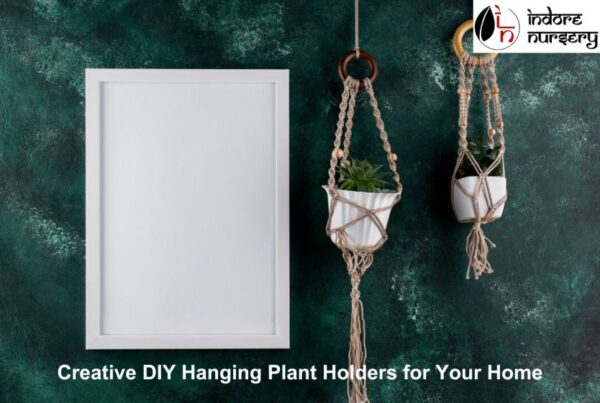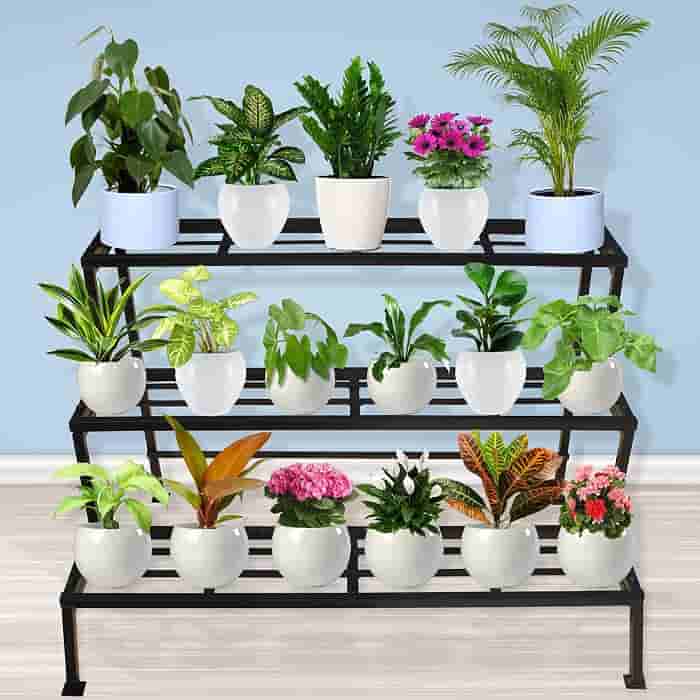The benefits of indoor gardening
Indoor gardening has lots of benefits. It cleans the air by removing toxins and adding oxygen. Having plants indoors can reduce stress and improve your mood. You can grow fresh herbs and vegetables, which promotes healthier eating. Indoor gardens also make your home look nicer and more lively. A good plan for your indoor garden helps you use space wisely, makes plants grow better, and makes it easier to care for them. It allows you to create a personal green space, even in small or city apartments, and can be customized to fit your needs.
Choosing the Right Plants for Indoor Gardens
Choosing the right plants for your indoor garden means thinking about light, space, and how much care they need. If your space doesn’t get a lot of light, go for plants like snake plants or pothos. For bright areas, try succulents or fiddle leaf figs. Consider the space you have: smaller plants like peace lilies work well in tight spots, while bigger plants like rubber trees need more space. Pick plants that match how much you can care for them—some need lots of water and humidity, while others are easier to maintain. Choose plants that fit your home and lifestyle for a healthy indoor garden.
Best Low-Light Plants for Beginners
For beginners, low-light plants are great because they’re easy to care for and don’t need much light. Snake plants are tough and clean the air. Pothos is flexible and low-maintenance. ZZ plants are tough and can survive with little care and light, adding a touch of green to your space. Cast iron plants are strong and do well in low light. Peace lilies need a bit of water but can grow in low sunlight. These plants are great if you want easy-to-care-for greenery that brightens up your home.
Flowering Indoor Plants That Add Color
Flowering indoor plants add bright color to your home. Try African violets for colorful blooms that do well in low light. Bromeliads bring bright, exotic flowers and are easy to care for. Anthuriums have bold red, pink, or white flowers that brighten any room. Kalanchoes provide long-lasting blooms in many colors and are simple to care for. Orchids add a touch of elegance with their many colors and can grow well indoors with proper care. These plants are great for adding a lively touch to your indoor garden.
Herbs and Vegetables You Can Grow Indoors
Growing herbs and vegetables indoors means you can enjoy fresh produce all year. Start with herbs like basil, mint, and parsley in small pots. Chives and cilantro are also easy to grow inside. For vegetables, try cherry tomatoes, radishes, and lettuce, which don’t need much space. Green onions and peppers can also grow well indoors. Make sure they get enough light, either from the sun or grow lights, and keep the soil moist. Indoor gardening lets you have fresh, homegrown ingredients even in small spaces.
Essential Indoor Gardening Tools and Supplies
For indoor gardening, you need some basic tools and supplies. Start with good pots that have drainage holes. Use potting soil made for indoor plants. A watering can with a long spout makes watering easier. Pruning shears help trim and care for your plants. A small trowel is useful for planting, and a moisture meter helps you check the water level. Grow lights are helpful if your space lacks natural light. Finally, a spray bottle is handy for misting plants that need extra humidity.
Choosing the Right Pots and Containers
Choosing the right pots is key for healthy indoor plants. Use pots with drainage holes to stop water from pooling and causing root rot. Small pots are best for small plants, while bigger pots suit larger plants. Ceramic and clay pots look good but are heavy. Plastic pots are lighter and usually have drainage holes. Choose a pot that fits your plant and lets it grow. Decorative pots can look nice but should still have drainage. The right pot keeps your plants healthy and makes gardening easier.
Soil and Fertilizers for Indoor Plants
For indoor plants, it’s important to use the right soil and fertilizers. Choose a potting mix that drains well and lets air reach the roots. Don’t use garden soil, as it can be too heavy and may have pests. Feed your plants with a balanced, water-soluble fertilizer every 4-6 weeks during the growing season. Look for fertilizers with equal numbers on the label, like 10-10-10.Follow the fertilizer instructions for the right amount. Good soil and regular feeding help your indoor plants grow strong and stay healthy.
Tools for Maintenance and Care
To keep indoor plants healthy, use a few key tools. A watering can with a long spout helps you water plants evenly. Pruning shears are good for cutting off dead or extra stems. A small trowel helps with planting and repotting. A moisture meter shows when the soil needs water. A spray bottle is useful for misting plants that need extra humidity. A plant stand or tray catches excess water and protects surfaces. Using these tools helps your plants get the care they need to stay healthy and grow well.










Recent Comments